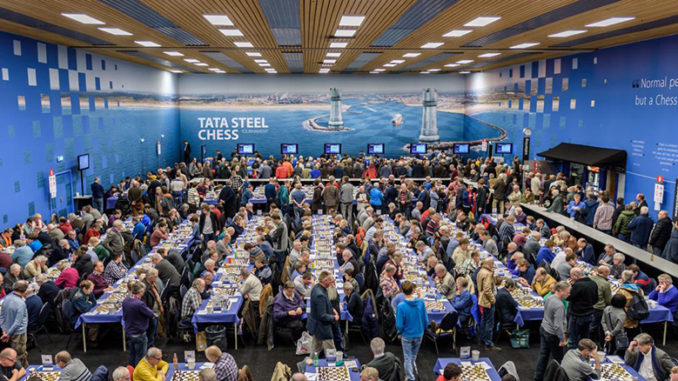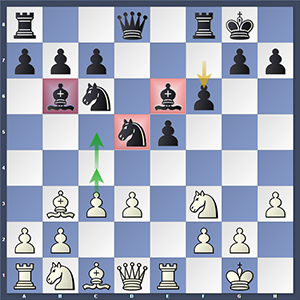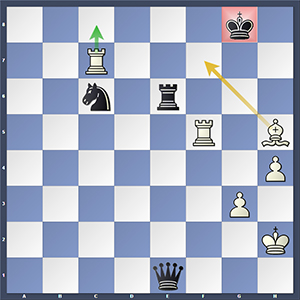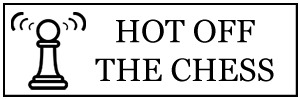
When watching top events, such as Wijk aan Zee, we chess fans are so accustomed to seeing top quality chess, full of finesses and brilliancies, that when we see the opposite, it can be quite the shock to the system. However, in round seven of the Tata Steel Chess Tournament, played on Saturday 21st January, that was exactly what reared its head in a few instances.
As unexpected as that is, the sources of such dramatic failings, would magnify the bemusement.
Sergey Karjakin defeated Levon Aronian in this round, but that is not all of the story. It seems that the Russian had overlooked a blunder by his opponent as early as move 10 in the game and failed to capitalise. Aronian had played 10…f6(??) and the simple 11.c4! would have netted Karjakin a piece.

In the diagram, above, this is clear to see. After 11.c4, Black’s knight is en prise and should this move, White follows with 12.c5! This leaves both the Be6 and Bb6 en prise and Black cannot do anything about this. The best he can hope for is …Bxb3 after which White plays Qxb3+ and then follows up with cxb6. It is quite unbelievable that both players seemed completely oblivious to this.
In the end, though, this did not affect the result of the game, Karjakin still won. However, he had to work a lot harder for it than he should have!
The other points in the round went to Yi Wei and Baskaran Adhiban. The former quickly got the better of things in his game with Loek van Wely. In the Najdorf Sicilian, Black just did not seem prepared enough to be honest and when White went for the super-aggressive 12.Bxe6, sacrificing a piece for two pawns and busting Black’s centered King position, Black did not respond to it very well. His 13…Nc5(?) was too complicit towards his opponent and should have given way to …Kf7. This would have led to approximate equality, but as it was, White dominated from this point on.
Baskaran Adhiban won a topsy-turvy game against Radoslaw Wojtaszek. Black had a good opening, managing to equalise very well and then end up better. Unfortunately for Baskaran, he misplayed things in a complicated middlegame in which White was able to obtain a strong passed pawn on the c-file and add another on the e-file, readily waiting. White then made the decision to let his knight go in order to push the c-pawn, but this was flawed and very costly. Black had the upper hand from then on in and soon had the point.
The other games were drawn, one of which saw the other ‘movus-horribilus’. It came in the Queen’s Indian of Magnus Carlsen and Anish Giri. The game saw rapid exchanges in the opening, which left many speculating a draw as early as move 20. The players had other ideas, however and the game turned into a 123-move marathon. Carlsen had done what he does so well and achieved a nice playable advantage with few risks.
Things sharpened up when Giri let a rook go in order to Queen a pawn, but the imbalance of White’s 2 pawns, 2 rooks, plus bishop compared to Black’s Queen, knight and rook, left Carlsen with the better chances. When one of Giri’s rooks fell and his other pieces were exchanged, leaving him with just his Queen with which to fight Carlsen’s rook, bishop and 2 connected passed pawns, the Dutchman really looked up against it.
However, from here we really saw the power of the Queen, (coupled perhaps with some hesitancy from White), with Black using her to make things as awkward as possible for White to progress. White tried but just couldn’t get going and then Black sacrificed the Queen for rook and pawn. This left Carlsen with bishop and wing pawn, but with the Black King controlling the Queening corner, there was nothing possible and the point was split.
A good fighting game, then! However, there was to be torture for Magnus Carlsen, who, it appeared, had missed mate in 3 much earlier in the game. In the position, below, Carlsen had played 56.Bf7+ very quickly. Had he taken some time, he will no doubt have seen the outright win of 56.Rc8+! Interposing with 56…Re8 is not worth looking at, Black just loses even worse, and moving the King leads to mate by 57.Rf7+ and 58.Rh8 mate. This is not the kind of thing that anyone would expect Magnus Carlsen to miss, least of all himself and he will no doubt be hugely annoyed with himself and perhaps a little embarrassed also.

At the end of the round, Wesley So remained in the lead of the group, with 5/7. Magnus Carlsen remains hot on his heels, however, just a half point behind, (along with Pavel Eljanov and Yi Wei). Of course, though, the World Champion should now be in the lead!
Masters Group Standings after Round 7.
- So — 5.0
- Carlsen, Eljanov, Wei — 4.5
- Giri, Karjakin — 4.0
- Aronian, Harikrishna, Adhiban, Andreikin — 3.5
- Wojtaszek — 3.0
- Nepomniachtchi — 2.5
- Rapport — 2.0
- Van Wely — 1.0
Masters Group Round 8, Sunday 22nd January, 13:30 local time.
Aronian – Giri
Rapport – Carlsen
Van Wely – Nepomniachtchi
Harikrishna – Wei
Adhiban – Andreikin
Eljanov – Wojtaszek
Karjakin – So.
In the Challengers Group, things remain extremely confrontational, with four decisive games in this round. Markus Ragger was among the victors, defeating Sopiko Guramishvili, who is finding the tournament a tough learning experience and remains on 0.5/7. Jones and Ragger remain at the top of the table, with 5.5/7.
Challengers Group Standings after Round 7.
- Jones, Ragger — 5.5
- Smirin — 5.0
- Xiong, Lu — 4.5
- Grandelius, Hansen — 4.0
- Tari, l’Ami — 3.5
- Dobrov, Bok — 2.5
- van Foreest — 2.0
- Lei — 1.5
- Guramishvili — 0.5
Challengers Group Round 8, Sunday 22nd January, 13:30 local time.
Grandelius – Hansen
Dobrov – Lei
Lu – Xiong
Jones – l’Ami
Guramishvili – van Foreest
Smirin – Ragger
Tari – Bok.

